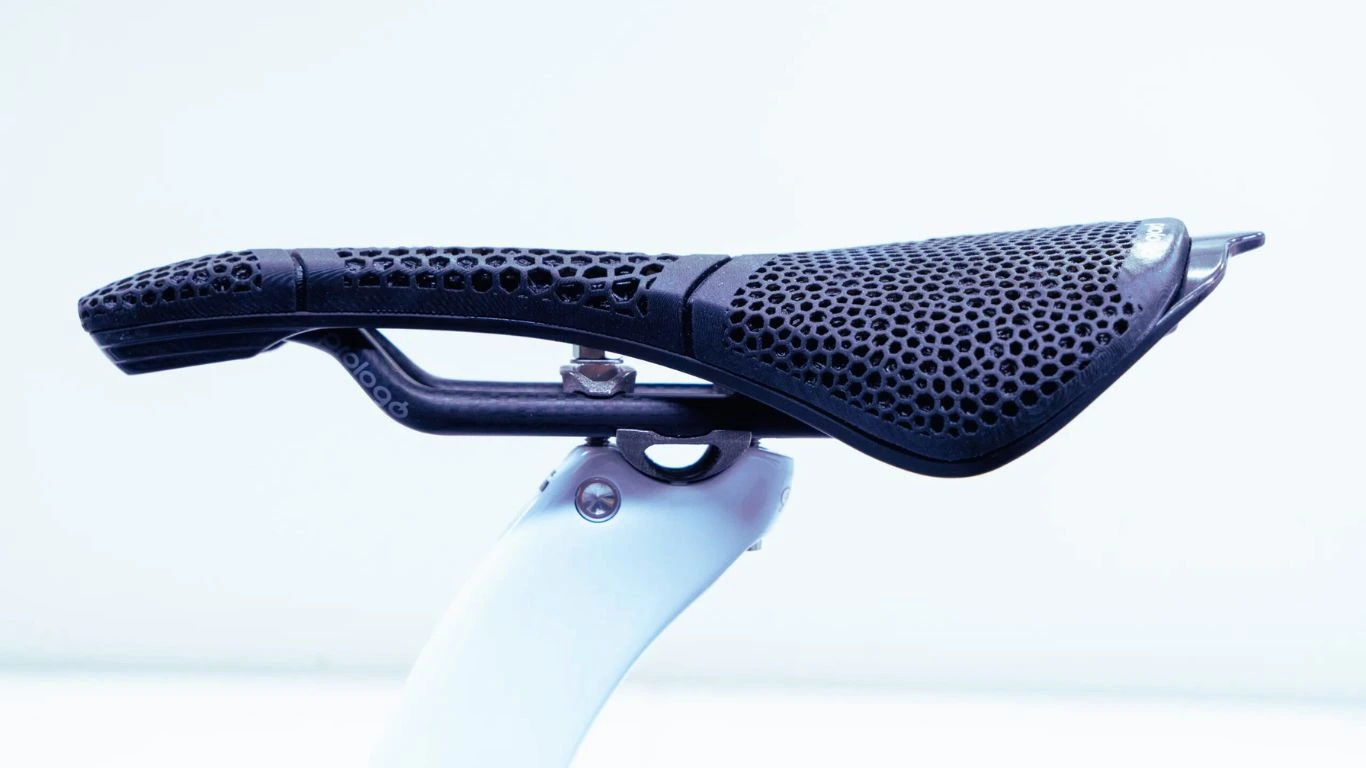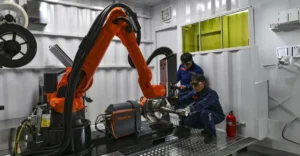Prologo launches Scratch M5 PAS 3DMSS with 3D printed cover for improved comfort while maintaining shape trusted by pro cyclists.
Italian brand leverages advanced 3D printing technology to improve rider comfort while maintaining trusted geometry
Prologo has launched an updated version of its Scratch M5 PAS saddle, incorporating 3D printing technology while preserving the shape trusted by top professional cyclists including Jonas Vingegaard and Egan Bernal.

The new Scratch M5 PAS 3DMSS maintains the compact 250 x 140 mm dimensions of its predecessor but features an innovative 3D printed cover designed to enhance comfort and distribute pressure more effectively without changing the saddle’s fit characteristics.
The Italian cycling components manufacturer combined its Multi Sector System (MSS) with digital light projection, oxygen-permeable optics, and engineering-grade resins to create precisely varied structures across the saddle surface.
“Each zone is constructed from two layers with varying geometries and densities to better support different areas of the rider’s body,” according to industry reports. The saddle is divided into three main sections – front, center, and rear – each optimized for specific riding positions and power outputs.
The rear section stabilizes sit bones during intense efforts, while the center area reduces pressure on sensitive tissues. The front portion provides support for riders shifting forward during climbs or sprints.
Development of the new model was informed by pressure mapping data collected through Prologo’s MyOwn fitting system, utilizing feedback from both professional and amateur cyclists.

The saddle retains the central channel, known as the Perineal Area System (PAS), which aims to reduce numbness by relieving pressure through the middle and improving blood flow during extended rides.
Two rail options are available: a lighter 176g version featuring Nack rails made from carbon fiber reinforced with Kevlar and aluminum filaments, and a 209g version using light alloy Tirox rails. They are priced at €390 and €290 respectively, with availability expected in May.
Read more : TCP Bioceramic Implants Proven Effective in Jaw Treatments
Prologo’s new release sees it enter a new market – one occupied by the likes of Fizik – with its Argo Adaptive option and Geman design company DQBD’s totally customisable SAM saddle. These developments underline how 3D print technology is transforming the cycling experience with greater comfort thanks to the ability to customize and distribute pressure more accurately.
































